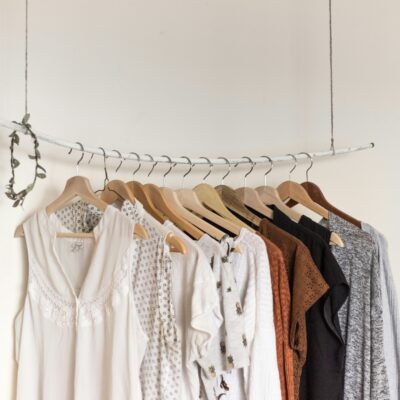Are you ready to revolutionize your wardrobe while making a positive impact on the planet? Sustainable fashion is not just a trend; it’s a movement towards eco-conscious choices that prioritize both style and sustainability. Join us as we explore how you can incorporate sustainable fashion trends into your everyday wardrobe effortlessly. Let’s dive in!
The Rise of Sustainable Fashion
Sustainable fashion has been gaining momentum in recent years, with more consumers and brands embracing eco-friendly practices. The rise of sustainable fashion is a response to the negative impact of fast fashion on the environment, from excessive water consumption to harmful chemicals used in production.
Fashion enthusiasts are increasingly looking for alternatives that align with their values, driving the demand for ethically produced clothing made from organic or recycled materials. This shift towards sustainability reflects a growing awareness of the need to reduce waste and carbon footprint in the fashion industry.
Designers and brands are also stepping up to meet this demand by incorporating sustainable practices into their collections, showcasing innovative ways to create stylish yet environmentally friendly garments. As consumers become more informed about the importance of sustainable fashion, they are actively seeking out ethical and transparent brands that prioritize environmental responsibility.
Understanding the Principles of Sustainable Fashion
Sustainable fashion is more than just a trend – it’s a movement towards a greener, more ethical future. It revolves around the idea of producing clothing in ways that are mindful of the environment and respectful of those who make them.
The principles of sustainable fashion encompass various aspects, from using eco-friendly materials to promoting fair labor practices throughout the supply chain. It’s about reducing waste, conserving resources, and supporting local artisans and communities.
By choosing sustainable fashion pieces, you’re not only making a style statement but also contributing to positive change in the industry. Educating yourself on these principles allows you to make informed decisions when it comes to your wardrobe.
Whether it’s opting for organic cotton shirts or investing in durable pieces that stand the test of time, every choice you make can have a ripple effect on the planet. Understanding these principles empowers you as a consumer to align your values with your purchases for a more sustainable future.
Tips for Building a Sustainable Wardrobe
When it comes to building a sustainable wardrobe, there are several tips you can incorporate into your shopping habits. Opt for timeless pieces that won’t go out of style quickly. Investing in high-quality items may cost more upfront but will last longer and reduce the need for frequent replacements.
Consider the materials used in the clothing you buy. Look for organic cotton, linen, hemp, or recycled fabrics that have a lower impact on the environment compared to synthetic materials. Pay attention to certifications like Fair Trade or GOTS which ensure ethical production practices.
Another tip is to shop from brands that prioritize sustainability and transparency in their supply chain. Research and support companies that use eco-friendly manufacturing processes and pay fair wages to workers.
Don’t forget about accessories! Opt for jewelry made from recycled metals or sustainably sourced materials to complement your outfits while staying true to your commitment towards sustainability.
Thrifting and Secondhand Shopping
Ah, the thrill of the thrift! Thrifting and secondhand shopping have become more than just budget-friendly options; they are now trendy and sustainable choices for fashion enthusiasts.
When you step into a thrift store or browse through online vintage shops, you’re not just buying clothes – you’re giving pre-loved garments a new life. It’s like going on a treasure hunt; you never know what unique pieces you might find that no one else will have.
One of the perks of thrifting is the opportunity to score high-quality items at a fraction of the original price. You can discover timeless pieces, designer labels, or quirky vintage finds that add character to your wardrobe.
Moreover, by opting for secondhand clothing, you are reducing waste and supporting circular fashion practices. It’s a win-win situation where you get to express your style while contributing to a more sustainable future for fashion. So next time you’re looking to refresh your closet, consider taking the eco-friendly route through thrifting and secondhand shopping!
Renting and Borrowing Clothes
Have you ever thought about renting or borrowing clothes as a sustainable fashion option? It’s a trend that is gaining popularity for its eco-friendly benefits and cost-effectiveness. Renting clothes allows you to enjoy the latest trends without contributing to clothing waste.
Many online platforms offer rental services where you can choose from a variety of high-quality pieces for special occasions or everyday wear. By renting instead of buying, you reduce the demand for new clothing production, which in turn lessens the environmental impact of fast fashion.
Borrowing clothes from friends or family is another great way to incorporate sustainable practices into your wardrobe. Not only does it promote community and sharing, but it also gives old garments new life through different styling perspectives.
Next time you have an event coming up or just want to refresh your look, consider renting or borrowing clothes as a mindful alternative that benefits both your style and the planet!
DIY and Upcycling
Embracing sustainable fashion trends not only benefits the environment but also allows you to showcase your unique style and creativity. By incorporating principles of sustainability into your wardrobe, such as thrifting, renting, and DIY upcycling, you can make a positive impact on the planet while looking fabulous. So next time you’re thinking about adding new pieces to your closet, consider opting for sustainable options that align with your values. Together, we can all play a part in making the fashion industry more eco-friendly and ethical for generations to come.





